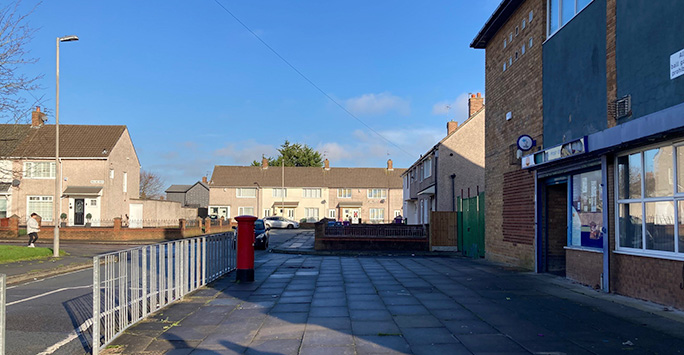Joined up? How central government can support place-based working
Posted on: 16 July 2024 by Joanna Hayes in Blog

The words ‘local government’ have returned to ministerial titles, with the renamed Ministry of Housing, Communities and Local Government representing a ‘refocus’ according to the new Labour government. Here, Joanna Hayes looks at how central government can support local government in a collaborative, place-based approach to addressing local priorities, drawing on lessons from the Partnerships for People and Place pilots.
Partnerships for People and Place was a two-year programme that funded 13 pilot projects across England to explore how more joined-up working – both within and between central and local government – might lead to better outcomes for local people.
One of the pilot projects was Croxteth Good Help Hub in Liverpool. Over recent years, Liverpool City Council’s service provision had become increasingly centralised as funding cuts led to staff reductions and building closures. The Council wanted to explore how it might work with partners to make services more accessible and chose to pilot a neighbourhood hub in Croxteth hosted and coordinated by Cobalt Housing.
An early task was to position the new hub within the tangle of existing and emerging provision and work out how to add value. The model settled on was a ‘wraparound’ for statutory services such as housing and social care. The aim was to provide early intervention for people in need of support but not currently known to services or not meeting service thresholds, as well as aftercare for people ‘stepped down’ from specialist services to prevent issues from re-escalating.
The hub team brought together a range of services that individuals could access on a drop-in or appointment basis – including Citizens Advice, debt advice, employment support, addiction support, and social prescribing – and forged links with other services in the immediate area.
The team wanted to provide not just help, but ‘good help’, and for anyone who needed it, which required service providers to work together. As one team member said: ‘It doesn’t matter who you work for, or who your clients, customers, or patients are. Everyone deserves good help, and the principles to deliver that are exactly the same.’
The project evaluation by the Heseltine Institute found that while the hub model demonstrated clear benefits for its clients, it also had positive outcomes for the neighbourhood and the city in increased knowledge of the area and stronger relationships between organisations. Many of those involved expressed a sense of connection – or re-connection – with colleagues, communities, and purpose.
Based on the pilot, Cobalt Housing has committed to continue to run and invest in a neighbourhood hub. Liverpool City Council has approved the implementation of a new neighbourhood model, which it describes as the biggest shake-up in how Council services are commissioned and provided in more than a decade, saying: ‘We’ve seen in the Croxteth hub that greater collaboration with other partners at a community level works.’
However, the project was not without challenges. It took time to consider the existing landscape and adapt the project model accordingly. Mismatched data sharing protocols prevented the collation of demand data, which would have aided planning, monitoring and evaluation. Frontline staff found that the role was motivating although it asked a lot from them emotionally, and so it was important to provide them with appropriate training and support. Furthermore, the pilot highlighted the balancing act involved in improving signposting to services while maintaining resources for the service provision itself.
The national programme evaluation by Ipsos UK and Grant Thornton considered all the pilot projects and found that there were common barriers to joined-up working in the areas of structures, priorities, funding, data sharing and culture. Its recommendations for central government departments undertaking place-based policy design and delivery – which it defines as ‘collaborative partnerships between central government, councils and other key partners to produce solutions to specific challenges or issues facing places and communities’ – can be summarised as follows:
- Structures – Establish departmental place-based forums, senior champions, and improved regional engagement mechanisms to help share best practice and connect central government with local partners
- Priorities – Improve recording and sharing of local, regional and national priorities to improve mutual understanding and enable more flexible policy design
- Funding – Create longer-term cross-government funding pots that are simpler to apply for and with built-in flexibility to adapt spend according to specific place-based needs
- Data sharing – Gather information on the real and perceived barriers to data sharing to improve and better communicate guidance
- Culture – Improve skills and capabilities for collaborative, place-based working, and recognise positive outcomes to change the culture in central government departments.
Labour has committed to mission-driven government – focusing on high-level, long-term ambitions that transcend departmental silos and working towards them in a joined-up way. Partnerships for People and Place, through the experiences of the 13 pilots and the resulting recommendations, can offer practical pointers for both central and local government as they work together to translate ambitions into outcomes.
Keywords: .